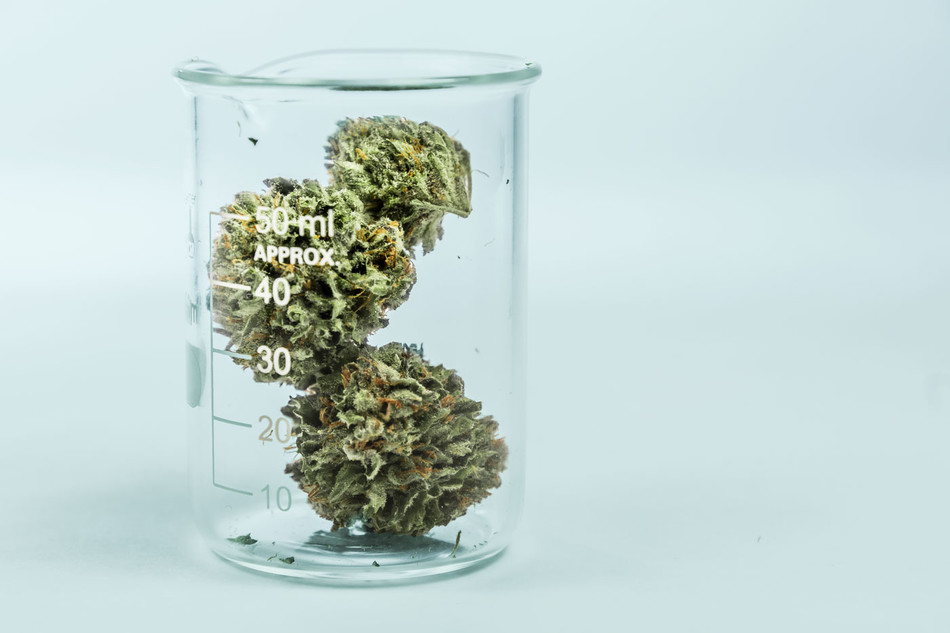Walk into any weed dispensary today and you are likely to find goods that claim to treat everything from mood disorders to sexual dysfunction. There are pot strains to ease anxiety, edibles to focus your mind, hash oils to boost your libido, vape liquids to help you sleep.
But what does the science say? Is marijuana truly a wonder drug, or is the 30-billion US cannabis industry blowing hot air? Are weed-based wellness products even safe?
“The first thing that consumers need to understand is that there are only a few clinical uses of cannabis that are backed up by solid science,” says Margaret Haney, the director of Columbia’s Cannabis Research Laboratory. “The main psychoactive chemical in cannabis, THC, has been shown to alleviate chemotherapy-induced nausea in cancer patients and to treat chronic pain. There’s also good evidence that it makes people with multiple sclerosis feel more comfortable,” says Haney, who is a professor of neurobiology in the Columbia University Irving Medical Center’s Department of Psychiatry. She also notes that CBD, a non-psychoactive component of cannabis, has been found to prevent seizures in children with some forms of treatment-resistant epilepsy.
While these are the only the medicinal uses of marijuana and its derivatives that have the broad support of physicians, scientists are currently investigating whether cannabis is helpful in treating a number of other health conditions. “There’s a lot of excitement right now about the potential of using cannabis or its constituents for treating post-traumatic stress syndrome; glioblastoma, an aggressive form of brain cancer; and neuropathic pain that many cancer patients suffer during treatment,” says Haney. “Cannabis is a very complex plant, containing dozens of active ingredients, so the possibilities are endless.”
Yet, using marijuana also carries significant health risks that should give pause to anyone who is considering turning to it for relief. “One of the big misconceptions about cannabis is that it’s not addictive, which isn’t true,” says Haney. “Many people do use cannabis in moderation, like drinking one glass of wine at dinner, and they’re fine. But as many as 10 percent of marijuana users will develop an addiction — meaning that they want to stop using but cannot, despite the habit seriously interfering with their life.”
Particularly at risk of addiction, she says, are people who use cannabis multiple times a day, every day. This can include the growing numbers of individuals who smoke weed in an attempt to ease anxiety, depression, and insomnia — conditions that marijuana has not been shown to treat effectively. “Cannabis can give people an immediate sense of relief from mood and sleep problems, but it doesn’t improve these conditions over the long run and may actually exacerbate them,” she says. Studies have also suggested that adolescents and young adults are likelier to experience cognitive and mental health problems as a result of getting high, and that using marijuana regularly may make them more susceptible to substance abuse problems later in life.
The prospect of using cannabis to alleviate chronic pain poses trickier questions for patients and physicians, Haney says, since marijuana does often work as a painkiller. “If someone is considering using cannabis in lieu of opioids, which are certainly more dangerous, it is important for them to know that we can’t say yet if the pain relief provided by cannabis persists with repeated use, or if one’s pain might intensify upon stopping cannabis use abruptly,” she says. “Again, patients should also know that daily use can be addictive, which I think is a point that’s often left out of these conversations.”
For adults who are considering using cannabis, either to treat an ailment or get high, Haney offers additional cautionary notes. The pot sold in dispensaries today can be much stronger than the marijuana people smoked decades ago, she says, and therefore likelier to cause unpleasant effects, especially for first-time users. She says it is also important to recognize that the cannabis industry is loosely regulated, with neither the federal government (which still classifies marijuana as a Schedule 1 drug) nor states taking aggressive measures to ensure that the cannabis sold in dispensaries is of high quality or purity, that advertised THC concentrations are accurate, or that marketing claims about health benefits are legitimate. “It’s impossible to know for sure what you’re getting in dispensaries,” she says.
For the millions of Americans who are now struggling to control their marijuana use, there are new treatments on the horizon. Haney, whose laboratory at Columbia University Irving Medical Center is one of only a handful in the US authorized to study the direct effects of marijuana on people, recently conducted a clinical trial for a new drug that may help addicts wean themselves off of marijuana or regain control of their use by reducing the high it gives them. The drug, created by the French biopharmaceutical company Aelis Farma, works by binding to the same brain receptor that THC latches onto, blunting its impact. A second, larger clinical trial involving several US medical centers and overseen by Columbia psychiatrist Frances Levin is now underway; if it is also successful, the drug could be on the market in three or four years.
“I imagine that someone could use this medication in combination with behavioral therapy, either to ease themselves off of cannabis altogether or to bring their use back down to a level where it’s not dominating their life,” Haney says.



